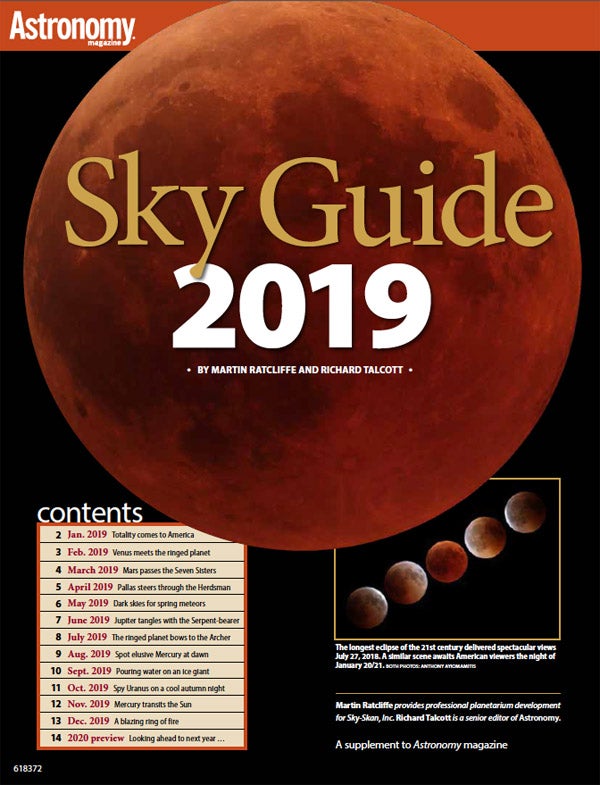Those seeking a land-based adventure likely will head to Chile. The path of totality will reach the coast in the beautiful port city of La Serena, where totality will last 2 minutes, 15 seconds. (The center line north of there will provide an additional 21 seconds of totality.) But the prospects for good weather improve as you head inland. If you prefer a big-city environment, the track will end at sunset in the suburbs south of Buenos Aires, where viewers can see up to 2 minutes of totality.
The year’s second central eclipse will occur December 26. The Moon will appear smaller than the Sun, so observers will witness an annular eclipse where a ring of fire will remain around our satellite. The eclipse track will cross parts of Saudi Arabia, Oman, and southern India before reaching maximum over Indonesia and Malaysia. On the center line there, annularity will last up to 3 minutes, 40 seconds.
The Moon isn’t the only object to pass in front of the Sun in 2019. On November 11, Mercury will transit the Sun’s face for the first time in 3.5 years. Observers will see the planet’s black disk slowly traverse our star. People across North America can see at least some of this event (wearing proper eye protection, of course), with those in the eastern third getting the best views.
Observers of lunar eclipses won’t feel left out during 2019. Totality will wash over much of Earth the night of January 20/21, with viewers in North America having front-row seats to see the spectacle. The Moon will traverse the darkest part of Earth’s shadow for 62 minutes.
Besides the Mercury transit, several other planets will put on good shows in 2019. Venus will be a brilliant object in the east before dawn early in the year. Giant Jupiter will reach opposition in June and ringed Saturn will follow a month later. Unfortunately, it will be a down year for Mars, though the Red Planet will recover nicely in 2020.










